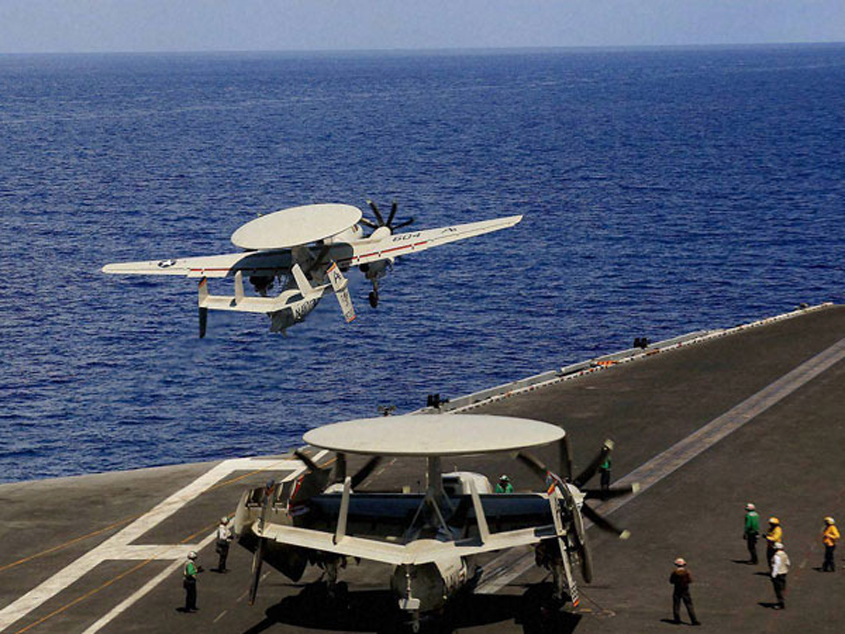A sector which has in the last few years acquired significant escalation of governmental attention for reasons ranging from development to defense is the “ocean”. Like everything else this process has its good, the bad and the ugly.
The good thing about the attention to the oceans is that as a resource, over the years in India, it has been underworked and developed with erratic inconsistency. Even intellectual attention has been paid to it in an erratic manner. As back asin 1995 the DPR of IIM Kojikhode talked of “The Indian Ocean Rim” as a strategic thrust area of the Institute-in-the-offing. When matters started rolling, the then chairman deemed it “premature”. That however, is another story.
That there is now the scope of turning things around, is a good thing. Consistent erratic approach is dangerous; inconsistent erraticism gives a potential and a window for intervention. The intervention between erratic actions requires sober contemplation on how the potential can be harnessed. This applies to ocean resources, also. From deep sea mining and coral preservation to analysing life at the shallow levels of the sea, there is so much work to do. The filed is literally deep and dramatically wide. The limits are the human capability and technology for exploration by humans.
Consider water sports, which is only beginning to be talked of, at least in Indian tourism scene. A list can be made of Kayaking, wind surfing, water skippers, single water bikes, water trampolines and of-course revamping old modes of transportation to a higher level of energy usage, say use of electric boats.
What the writer says above is neither in the domain of remote future or feverish imagination. In the resort town of Hua Hin in Thailand there exists Asia’s largest man made lagoon. There the development of the lagoon itself is a major technological feat. It was developed using cutting edge clear water technology. The example of Mahasamutr which is 4 km from Hua Hin beach is a classic example of how luxury and nature can be fused at the shores of the ocean for pleasure and rejuvenation. It does no damage to anything that the sea stands for. Indeed the risks of the sea are considerably mitigated if not fully eliminated by such developmental rocesses.
To use a phraseology from current management jargonize: the environment is totally “de-riscked”. The important thing is to realise is that the risking is not just a concept for the corporate world but needs to be extended to all aspects of human endeavour.
That bring to fore the endemic question of “risks” in all aspects of human endeavour and certainly to ocean related activities.
Recently there was a cruise ship in the northern reaches of Canada, where till not so long ago the icebergs made navigation impossible. As a reality of climate change the ice bergs have melted and, alas, another preserve of nature has opened up to the possibilities of commercial exploitation. One only hopes that development will not be the carrier of havoc to what bounties of nature have bestowed.
But that brings us to the darker side of what man can do to ocean resources. Navigating the sea is one definite interface with the ocean. The flip side of the coin is that environmental regulation for ships are being given more thought, globally. Notwithstanding this, huge distances remain to be covered. The environmental rules for the industry are enshrined in MARPOL (standing for marine pollution). There are several local regulations, also, such as Vessel General Permit 2013 which gives limits on emission. This has to limit the use of high sulphur fuel. This kind of fuel has more liberal targets in open seas than nearer land.
However these regulations—at least so far as the ocean are concerned—do not go far enough. Witness China’s reaction to the global body’s arbitration award on the South China Sea. The problem is simple and complex rolled in one.
It is simple, when one uses common sense and lets logic take its course. It becomes a complex one when one asks the issue of jurisdiction, mandate and enforceability. Clearly there are huge distances to be covered.
The use of technology in this area is going to be critical. The automated censor technology could help ship operators to remain in compliance. The ray of hope lies in the fact that various pollution and discharge acts can be punished for various violation even outside territorial waters.
Unfortunately many systems especially where tankers and LNG carriers are concerned have a higher sensitivity. This applies specially to trade in the Arctic. As of now, the system is restricted to the ships and there is no significant ship-to–shore transmission of data.
The course of action for the future seems to be cut out.
If one thing is known, it is that there can be no going back.
(The authour is Senior Managing Director & Principal Economic Adviser, Protiviti India member pvt. ltd.)

